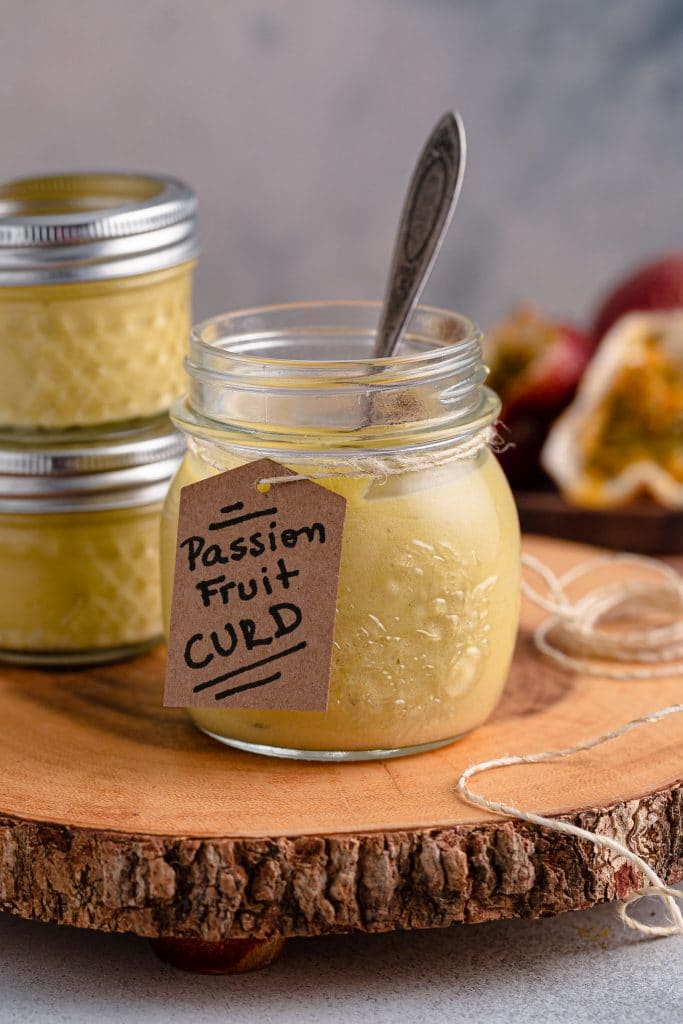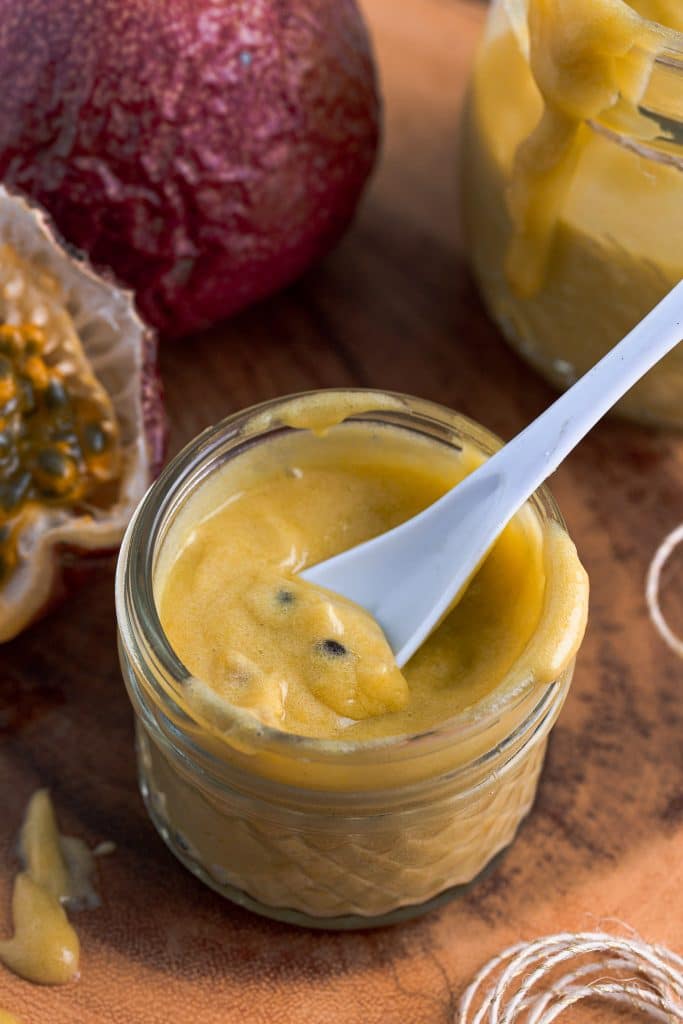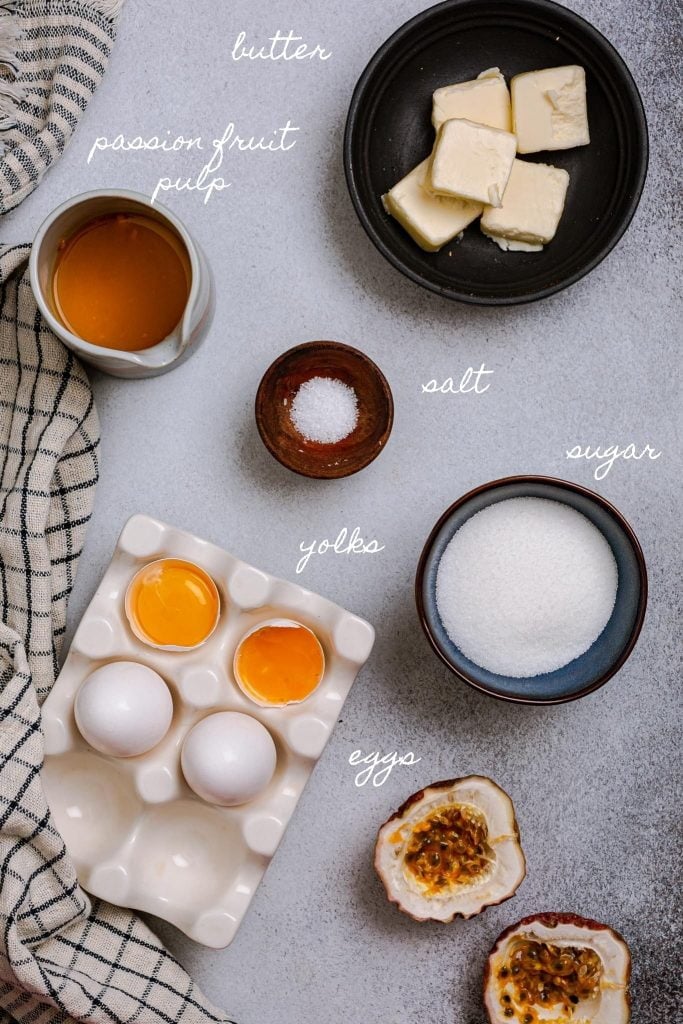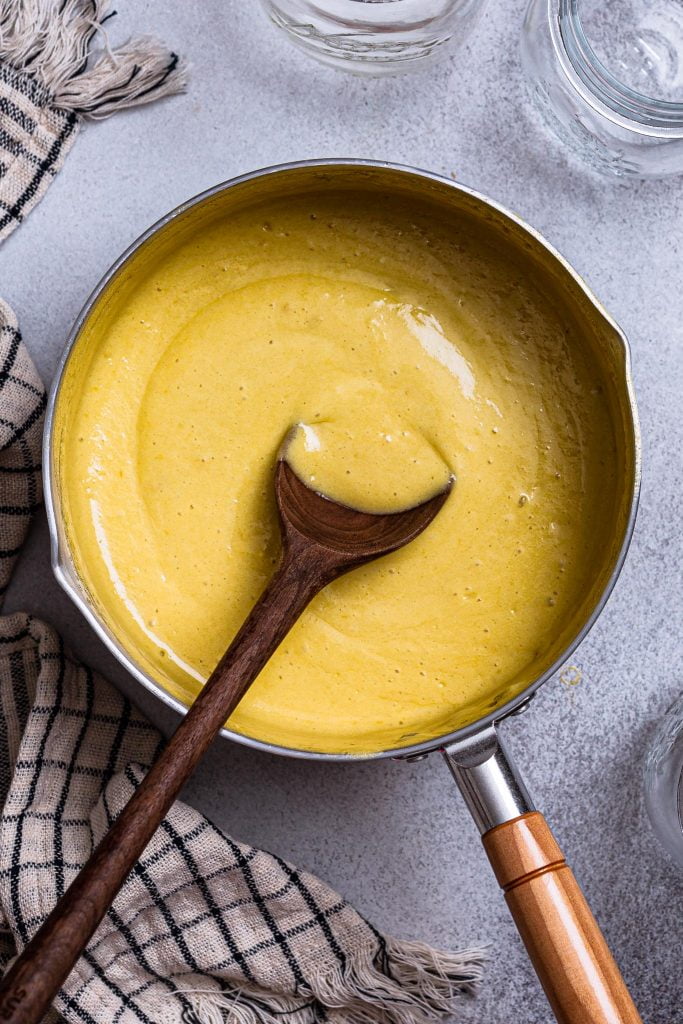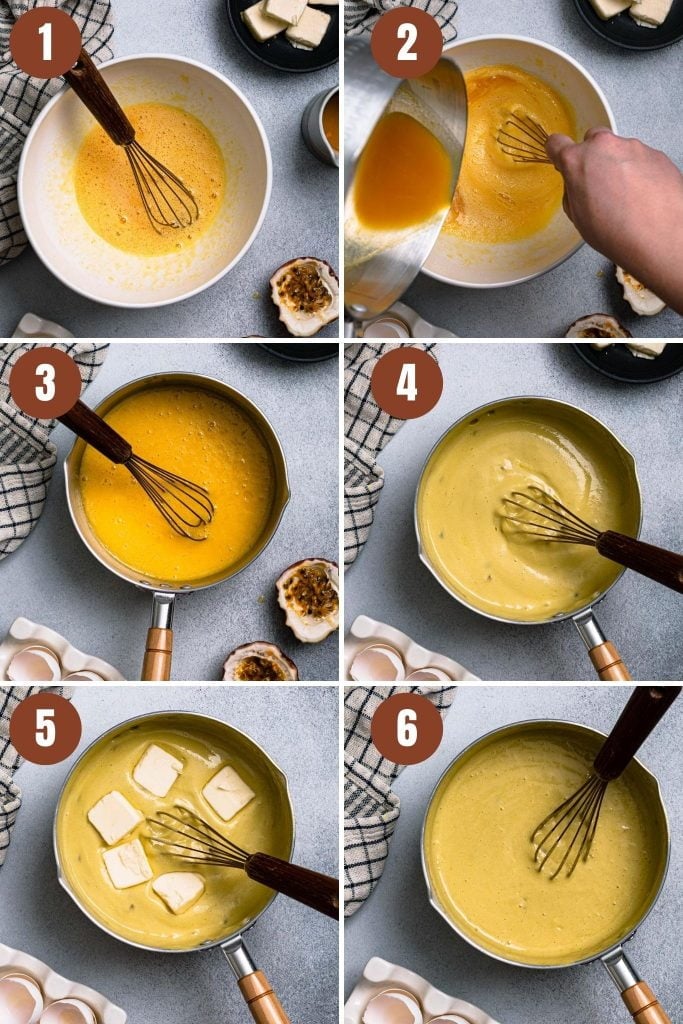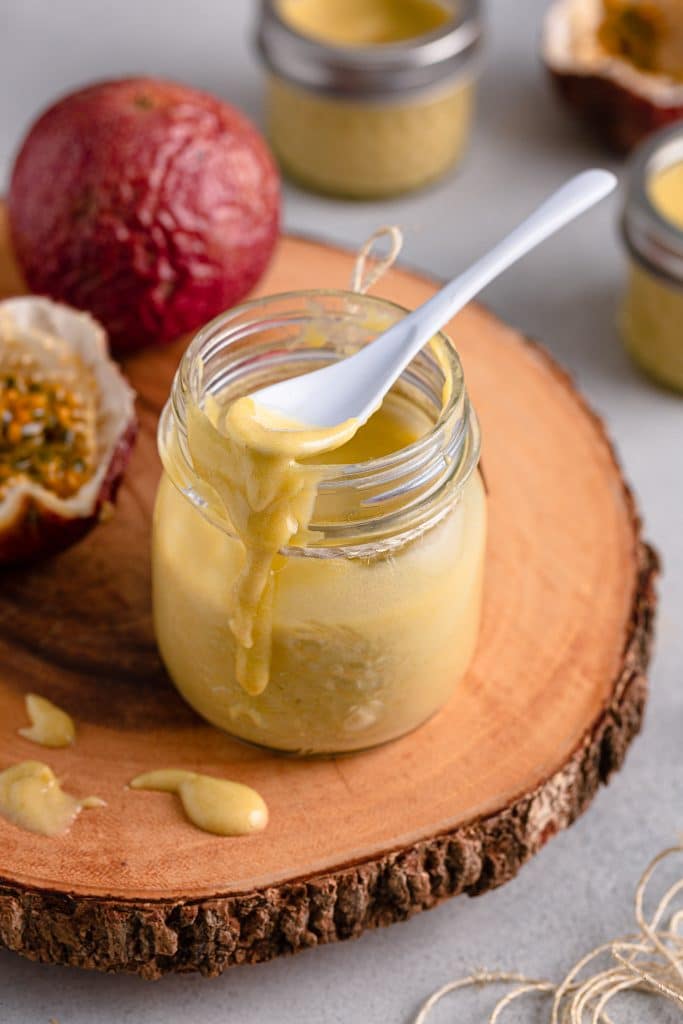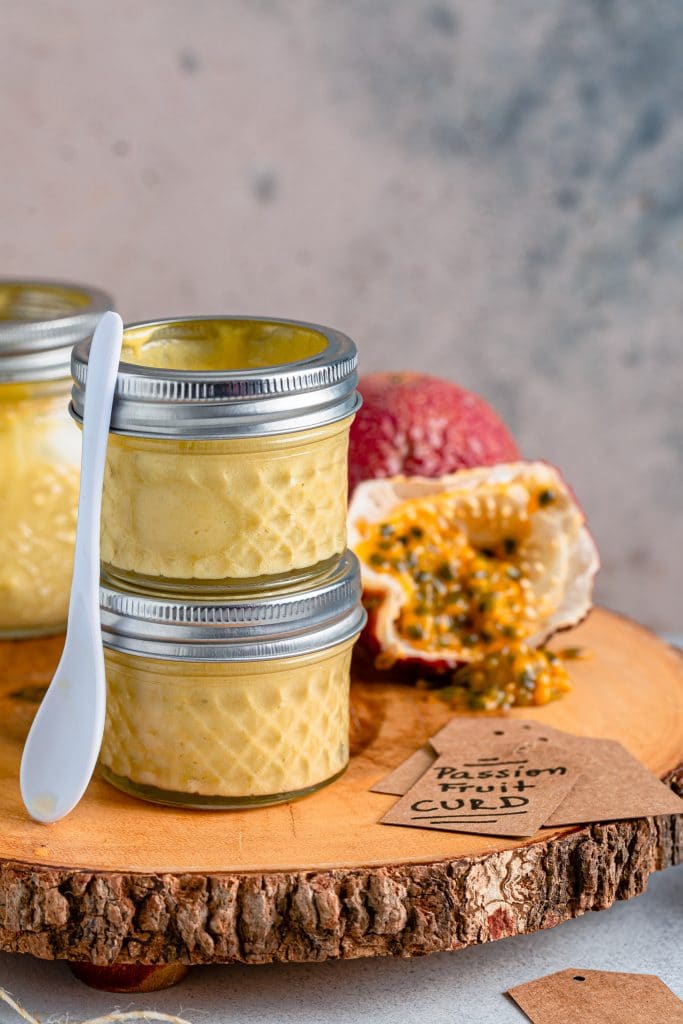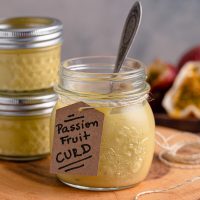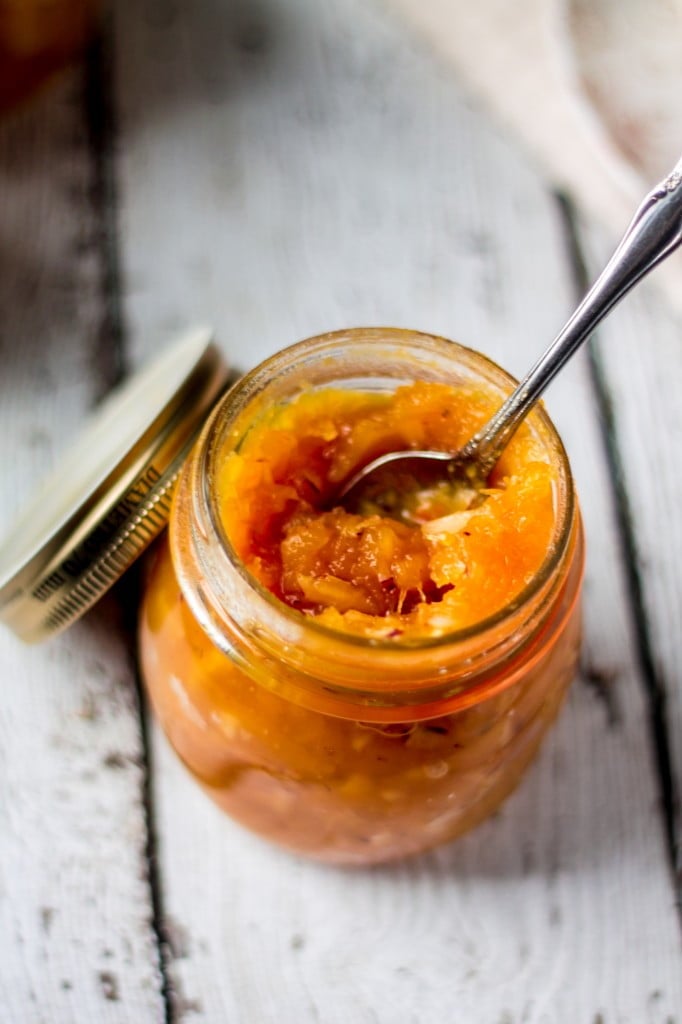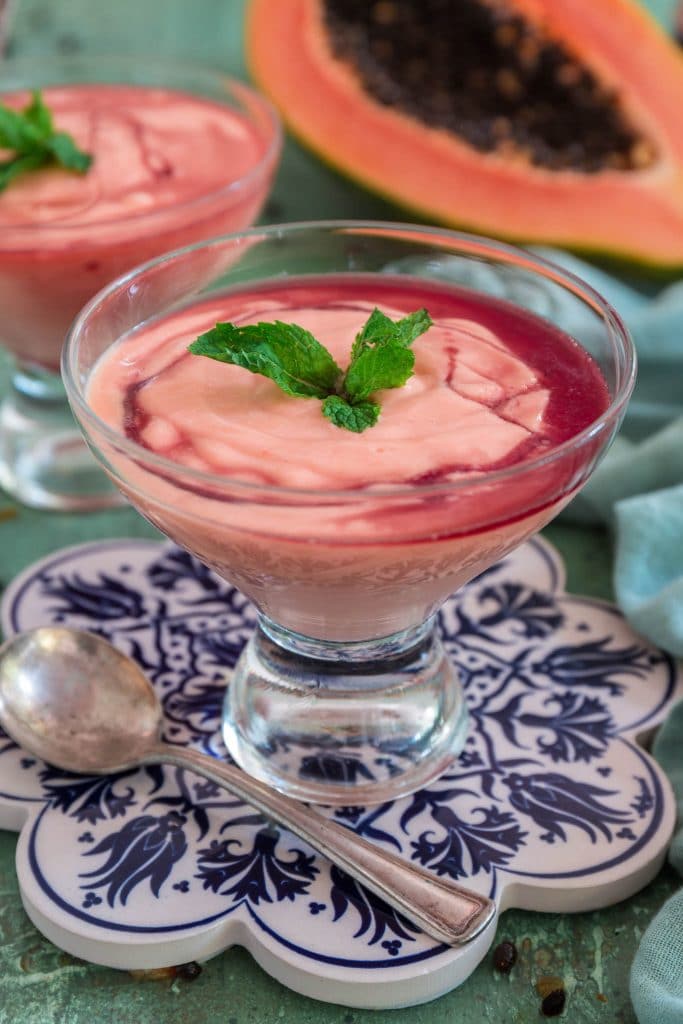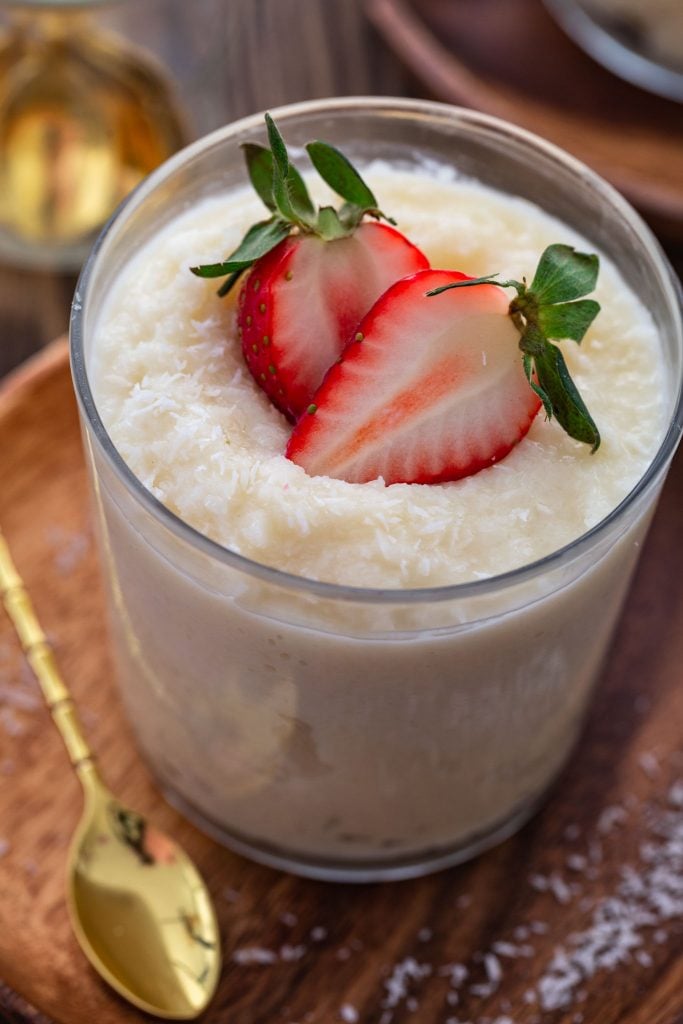Seriously, is there anything better than passion fruit? If you know me, you know I’m obsessed! I recommend you make my Passion Fruit Mousse, Passion Fruit Ice Cream, Passion Fruit Cocktail and Pan Fried Salmon with Passion Fruit Sauce.
An irresistible tropical fruit curd!
Another day, another passion fruit recipe. I could be happy just posting passion fruit recipes for the rest of my life! Maybe I should start a passion fruit blog… But I digress! On the table today is this velvety passion fruit curd, aka the fruit curd that never lasts longer than a day in my house! It’s sweet (but not “give you a headache sweet”), bright, vibrant and unbelievably addictive. Fair warning: you might eat the whole thing in one sitting. Make it at your own risk! 😉
What is passion fruit curd?
Passion fruit curd is a dessert topping, made from eggs, passion fruit pulp, sugar, and butter. Even though it is eaten like you would eat jam (spread on things and used as filling or topping in desserts), it is more of a custard than a jam or jelly. The most popular type of fruit curd is the classic lemon curd, which originated in England dating back to the early 1800’s. There it is traditionally served at afternoon tea, with bread or scones, as an alternative to jam!
Ingredients
Here’s what you’ll need to make homemade passion fruit curd: PASSION FRUIT PULP – Either frozen (and thawed) or fresh. If using fresh, heat the pulp gently to liquefy it, and then strain through a fine mesh sieve to separate the seeds. You can then add some of the seeds to the curd if you want! EGGS – I use 2 whole eggs and 2 yolks. Some recipes call for all egg yolks, but I like a not so pronounced egg flavor and a lighter texture that is achieved by using a few whole eggs. SUGAR – I have played around with this recipe quite a bit, and I like it better when it isn’t overly sweet. 1/2 cup is the perfect amount! If you like it sweeter, by all means, use more sugar. SALT – As always, a pinch of salt brings out sweetness and depth of flavor. BUTTER – Use cold butter, if you can! The cold butter slowly melts, as you whisk, emulsifying and helping the curd thicken even more.
How to make Passion Fruit Curd
Passion fruit curd is easy to make, but there are a few things you should do to avoid some common mistakes and make sure your curd is perfect!
Use a non-reactive bowl and double boiler to avoid a metallic flavor. High acidic foods, like passion fruit, react with metals like aluminum and copper, causing the metal to leach into the food you’re cooking. Temper the eggs to avoid scrambling them. Strain the mixture before returning it to the stove, just in case some of the eggs scrambled when tempering. Cook the curd in a double boiler or use a bowl set over a saucepan with simmering water. We want it to cook low and slow to prevent curdling and lumps.
Recommended tools and equipment: glass or ceramic bowl, whisk, double boiler, mason jars for storing. Here’s how I make homemade passion fruit curd. As always, you will find the printable (and more complete) version of the recipe at the end of this post!
Step 1: Mix the eggs, sugar and salt.
Whisk eggs, yolks, sugar and salt in a bowl. (Photo 1)
Step 2: Temper the eggs.
Heat the passion fruit until steaming but not boiling. Pour it slowly over the egg mixture, whisking constantly. (Photo 2)Strain the mixture back into the double boiler. (Photo 3)
Step 3: Cook the curd.
Cook until it thickens. (Photo 4)
Step 4: Add the butter.
Add the cold butter (Photo 5) and mix gently until it melts. (Photo 6)
Why won’t my passion fruit curd thicken?
That probably means the curd wasn’t heated long enough. To ensure my passion fruit curd thickens nicely every time, I like to use a thermometer. Passion fruit curd will thicken at about 170 degrees F, just below simmer. You will be able to see the streaks left by your whisk when it does. The curd will also keep thickening as it cools.
What if it’s too thick?
The easiest way to fix a fruit curd that is too thick is to whisk in extra passion fruit pulp. Start with a little and add more as needed until it reaches the desired consistency!
Why does my curd taste metallic?
Your fruit curd will taste metallic if you use a metal bowl or pan to make it. Like lemon, passion fruit is quite acidic and the high acidity content can cause the metal (like in an aluminum or copper bowl/pan) to leach into the curd, resulting in a metallic flavor and a weird, almost green color. To prevent that, I recommend you use non-reactive cookware, such as stainless steel, glass or ceramic.
How to fix lumpy passion fruit curd
If you follow my recipe, use a double boiler (or a bowl set over a saucepan) and strain the mixture after tempering the eggs, your passion fruit curd won’t be lumpy! But what if you were feeling brave and thought you could get away with cooking the curd straight over the heat, without straining? Should you just toss the lumpy, scrambled egg, curdled mess? Nope! You can still save it. Just strain the warm curd through a strainer to remove any eggy bits before stirring in the butter.
Uses for passion fruit curd
You mean, other than eating it all by the spoonful? Because that’s what usually happens in my house. That being said, there are several ways to use this delicious curd. Here are some of my favorites:
As a topping on scones, muffins, pancakes, waffles, ice cream, yogurt, cheesecake, toast, croissant and even drizzled on a loaf cake! As a filling for tarts and pies, crepes, macarons, cake, sandwich cookies or bars, donuts, and pavlovas. To make layered desserts, like parfaits and trifles.
Homemade passion fruit curd also makes a great hostess gift! Just pour it in mason jars and decorate with ribbons and cute tags. Et voila! A delicious and thoughtful gift to bring to the next dinner party or holiday event. Did you make this recipe? I love hearing from you! Please comment and leave a 5-star rating below. You can also take a photo and tag me on Instagram with #oliviascuisine.
If you love this recipe, you will also like:

